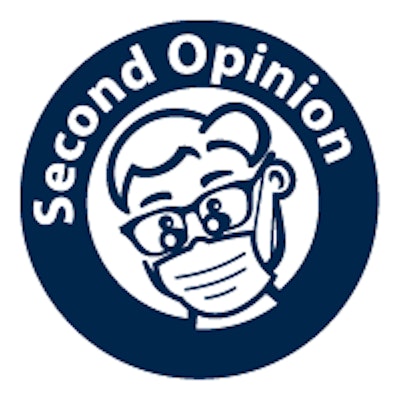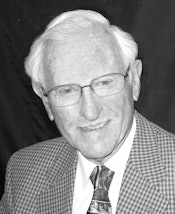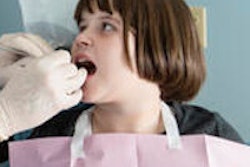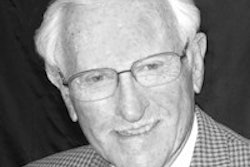
A basic tenet of a just society is that children, because they are least able to help themselves, be given priority for healthcare. Since poor and minority children have the most oral disease, they should be given the highest priority for allocating oral healthcare resources.
Children are essentially nonambulatory when it comes to accessing healthcare. They need to have a parent or caregiver with the time, money, and means to transport them. Many poor and minority children lack that caregiver. Thus, they will not receive preventive and curative healthcare, even when it is free. Unless these children are "carried" to a dental provider, the provider must be brought to them in schools.
 Jay W. Friedman, DDS, MPH.
Jay W. Friedman, DDS, MPH.The limitation of transportation is not the only barrier that prevents most disadvantaged grammar-school children from accessing traditional private offices or community healthcare centers. Other barriers include the high cost of fee-for-service, ethnic and cultural attitudes and values, deficient education, single parentage, and household debts. The increasing shortage of dentists in rural areas and inner cities and also the refusal of many dentists to treat disadvantaged children because of low Medicaid fees compound their neglect.
More than 50 countries worldwide utilize dental therapists. Many, including New Zealand, Australia, Malaysia, and the Canadian province of Saskatchewan (the latter from 1972 to 1987 when a conservative government disbanded its school program), provide dental care to nearly 100% of grammar-school children, using school-based, publicly funded, salaried dental therapists who have been documented to provide care that is as good or better than dentists. Preschoolers may also receive preventive and early interceptive care in these programs.
The success of school-based programs does not occur overnight. It takes many decades to train enough dental therapists to staff the school clinics and mobile trailers stationed on school grounds. Dental therapists in school-based programs are not competitive with, and do not adversely affect, the income of private practicing dentists.
“Dental therapists in school-based programs are not competitive with, and do not adversely affect, the income of private practicing dentists.”
Rather, these practitioners serve a population that all too many dentists prefer not to treat -- poor and minority children with the most dental disease. Most dentists in countries with dental therapists support the school programs. It is only when dental therapists are permitted to augment private practices or to enter into independent practice that they become competitive and could eventually effect other private practitioners adversely.
The first dental therapists in the U.S. began practicing in 2004 in Alaska serving Native Americans in rural Alaska on federal/tribal territory over the strident opposition of both the American and Alaska Dental Associations. There are 58 dental health aide therapists are now deployed in small villages according to a 2013 study, either in a school or a health center within walking distance. While their main focus is on children, they may also provide basic care to adults, including scaling, fillings, and uncomplicated extractions.
In 2009, Minnesota became the first state government to recognize dental therapists. By 2014 there were 32, six of whom were advanced dental therapists. They work in a variety of settings, including community clinics, private practices, and one inner-city school, with the proviso that at least 50% of their patients derive from underserved populations. They treat both adults and children. While the Minnesota program will increase care for many poor children, many more will continue to be neglected because they remain nonambulatory in the absence of a caretaker who can transport them to the clinic or private practitioner.
The Minnesota model is most likely to be copied in other states. Although ostensibly required to care mostly for underserved populations, oversight will be minimal and eventually the dental therapists are likely to be employed by for-profit entrepreneurial private practitioners. They may even achieve independent practice in direct competition with dentists.
Organized dentistry -- the national and state and local dental associations -- should have advocated for the successful model of dental therapy rather than fabricate its failures. It could have called for the restriction of dental therapists to school-based programs with indirect supervision and collaboration of public health dentists. Historically, this model is the most economical, efficient, and effective.
Rather than viewing dental therapists as competitive with private practitioners, they should be recognized as adjunctive professionals, in the same manner as the medical profession recognizes physician assistants.
But most important is the moral obligation of our profession to help those who are least able to help themselves. It an ethical imperative to provide oral healthcare for young children in school-based programs where the greatest number can be served most effectively and economically. It is common sense, because if we really care for all our children, it is the only alternative that can fulfill our professional responsibility and satisfy their need.
Jay W. Friedman, DDS, MPH, is based in Los Angeles, CA. He can be reached at [email protected].
The comments and observations expressed herein do not necessarily reflect the opinions of DrBicuspid.com, nor should they be construed as an endorsement or admonishment of any particular idea, vendor, or organization.



















